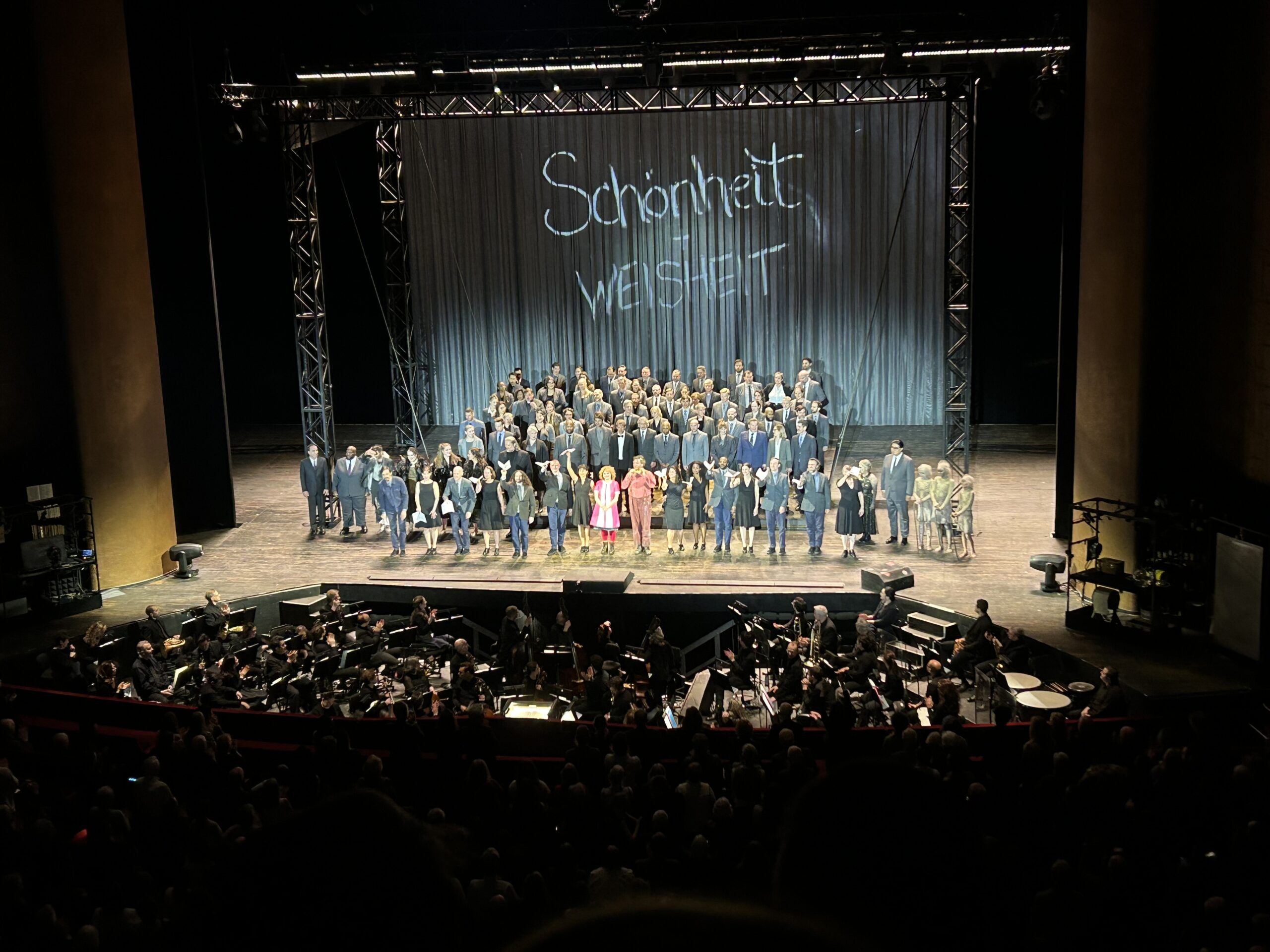Standing in the aisle or talking to a neighbor is not where an opera-goer hopes to be caught when the performance begins. But choreographer Simon McBurney’s production of Mozart’s Die Zauberflöte (The Magic Flute) gave the audience at NYC’s Metropolitan Opera little warning. With house lights still on, audience and cast alike found their places as the orchestra struck up a cheerful overture and an omnipotent hand conjured chalk mountains and a serpent onto a projection screen at the back of the stage. It turned out the audience was not there to watch a static performance, but to participate in its real-time creation.
Plot Summary & Themes
The Magic Flute is a fairy tale of striving quests in which nothing is as it first appears. To make a 3.25-hour story short, Prince Tamino agrees to rescue Pamina, daughter of the Queen of the Night, after falling in love with her portrait. As their allegiances shift from the Queen to sorcerer Sarastro, Pamina’s ultimately benevolent kidnapper, Tamino and his sidekick Papageno are put through tests of loyalty and willpower to attain love.
Among the many themes that emerge from this story is the external manipulation of worldly events. The line between the natural and supernatural is blurred from the opening scene where a giant serpent chases Tamino into fainting. The protagonists are pulled like stringed puppets between the magnetic fields of two humans with godlike superpowers: the Queen of the Night and sorcerer Sarastro. These high rulers can communicate with people across great distances, endow musical instruments with magical powers, and alter the emotions of their subordinates.
McBurney’s production allowed the manipulation of the characters’ journeys to spill into the staging itself.
The Pit
Before the opera even started, the placement of the orchestra pit signaled something unconventional. Many theaters hide the pit below the stage, allowing only the conductor’s head to see the action above and keep the orchestra in sync. The Met placed the orchestra in front of the stage and elevated it so that all the musicians’ heads rose above stage level — a strikingly visible presence.
The orchestra became an extension of the stage and thus the action itself, bridged by the key role of musical instruments in the plot. To aid in their quest, Tamino is given a magic flute and Papageno a glockenspiel, which can rescue them from danger by inducing joy and dance in whoever hears their sounds. But rather than play the instruments themselves, the protagonists handed them off to someone in the pit to play on their behalf. At times, the actors and players even struggled over possession of the instruments, grappling for control over their own story’s soundtrack, much to the audience’s amusement.
The orchestra’s visibility harkened back to another theme of the opera: the power of music to bring love and joy to the world.

The Foley Artist
The orchestra was assisted in personifying the score by Foley artist Ruth Sullivan from stage right. Her homemade percussion arsenal, with which she concocted sound effects to accompany the action on stage, included a bucket of water for plunging sounds, a hanging metal sheet to pound on for weather effects, and a shelf stocked with wine bottles of various sizes, shapes, and fullness. The latter was put to comic effect in a scene where buffoon character Papageno empties his bladder into some bottles on stage.
The characters sometimes exploited the Foley artist’s visibility by banging objects on stage in fast, unpredictable rhythms. They weren’t just trying to throw her off rhythm; they were challenging the supernatural controllers of their fate through the language of music.

The Visual Artist
Live creation of the soundscape was mirrored by visual artist Blake Habermann, who drew the world into being from stage left. His main canvas was a chalkboard placed in front of a camera projecting onto the stage, where he rapidly sketched backgrounds and animated non-cast creatures like the serpent that pursues Tamino in the beginning. He also scribbled out act numbers and occasional cheeky meta-commentary on the play’s action. The sight of his giant hand made the characters it loomed over look like puppets, with the audience privileged to gaze over the puppeteer’s shoulder.

Bringing the Audience In
The stage’s boundaries were further blurred when Papageno, frustrated by his chances for a female companion being pulled away from right in front of him, ventured into the audience in search of love. He chose a young woman in a front row as the target of his wooing, while the chalk artist’s camera zoomed in and projected her beaming reactions onto the screen behind the performers. With a cast member wandering the aisles and an audience member’s face projected on stage, the line between performer and observer was fully erased. The audience too became active participants in the messy creation of drama.
More than a faithful performance of a 1791 opera, McBurney’s Magic Flute deconstructed the opera to remind us that art isn’t just what you make of it, but how you make it. Are we autonomous agents of our own lives, or are our fates–like those of the characters–at the mercy of hands just beyond the frame?


Leave a Reply